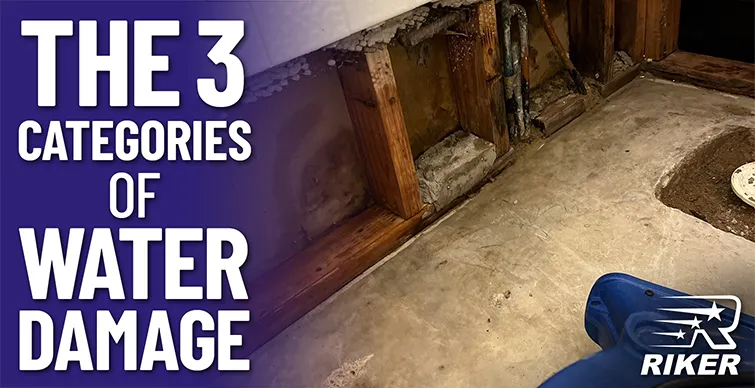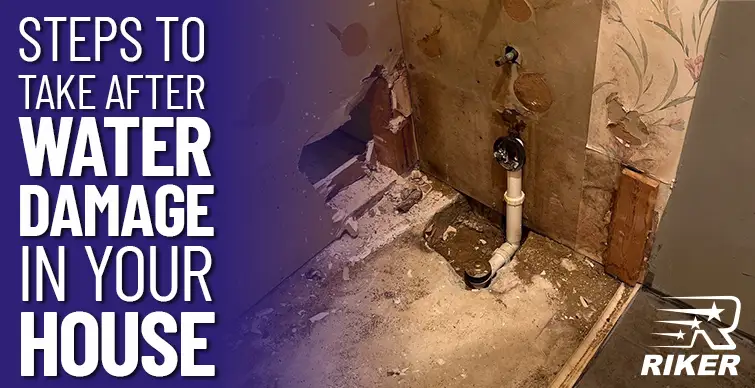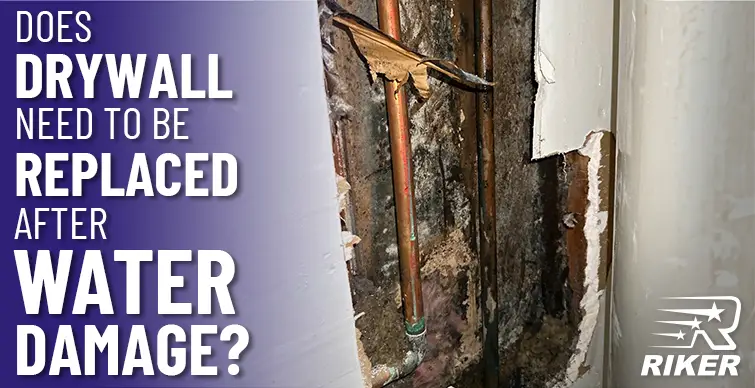Have you ever wondered what does water damage look like or what causes it? Water damage is a concerning issue that occurs when water enters your home and causes destruction to your property. This can result from various sources such as leaks, floods, burst pipes, heavy rain, or malfunctioning appliances. Unfortunately, many Texas homeowners are still unable to recognize the signs of water damage until it becomes a serious problem.
Over time, water damage can lead to structural issues, mold growth, and other serious problems if not addressed promptly. It can also cause physical injuries from slip-and-falls or electrocution. Moreover, the water may bring toxic chemicals into your home. Therefore, identifying the signs of water damage is crucial to spot them early and take immediate action. In this article, we will discuss the different types, common signs, and hidden signs of water damage, as well as the next steps you need to take to fix it.
Key Takeaways
- Water damage can seriously impact your home, leading to structural damage, mold growth, electrocution, and health risks.
- Common signs of water damage include discoloration, peeling paint, warped floors, and musty odors.
- Some signs of water damage can be hidden, requiring specialized tools like moisture meters to detect.
- Early detection and swift action can help minimize repair costs and prevent extensive damage.
What is Water Damage?
Water damage can be described as the destructive effects that occur when water infiltrates and compromises the structural integrity of your property. This can result from various incidents, such as burst pipes, leaks, floods, faulty appliances, or heavy rainfall. If not fixed immediately, water damage can lead to severe consequences like structural issues, health risks, electrical hazards, and damage to personal belongings. Also, it will affect the overall safety and comfort of your home.
Different Types of Water Damage
Water damage falls into three distinct categories, each with unique characteristics and implications for restoration. Category 1 involves clean water from sources like pipes, sinks, or appliances, posing minimal health risks. Category 2 encompasses contaminated water, often from washing machines, dishwashers, or toilets, which can cause discomfort or illness. Category 3 represents the most severe cases, involving grossly contaminated water from sewage, flooding, or standing water, posing significant health hazards. Understanding these categories is crucial for identifying signs of water damage and determining the best course of action for restoration.
The different types of water damage include:
Clean Water Damage
Clean water damage is a type of water damage that is caused by water from uncontaminated sources like broken pipes. Even though it is not immediately harmful, it can still cause significant damage to your property and belongings if you do not fix it straight away.
Gray Water Damage
Gray water damage comes from water that contains – or has been exposed to – some contaminants. This may include bath or shower water or discharge from appliances like dishwashers, aquariums, or washing machines. It poses a health risk if not addressed quickly.
Black Water Damage
Black water damage is the most dangerous type of water damage. It occurs from toxic or pathogenic water that comes from sewage backups, floods, or toilet backflows. It contains harmful pathogens and requires professional expertise to ensure safety and thorough cleaning.
For more information on the different types of water damage, read The Three Categories of Water Damage.
Common Signs of Water Damage
According to the most recent data, water damage affects nearly 14,000 households daily in the United States. The most common and visible signs of water damage include:
- Discoloration: Look for yellow, brown, or dark spots on ceilings, walls, or floors. This often indicates a leak.
- Cracked or crumbling plaster: Water can deteriorate plaster and lead to cracks or crumbling areas.
- Warped or swollen floors: Excess moisture causes floors to buckle or warp. This is very obvious in hardwood floors.
- Stains or streaks: Noticeable water stains or streaks running down walls can signal a leak.
- Peeling paint or wallpaper: Water weakens the adhesive and causes the paint to bubble or peel.
- Sagging ceilings or walls: Significant water damage can cause structural components like ceilings or walls to sag or bow.
- Mold growth: Mold thrives in damp environments and can appear as black, green, or white patches on walls or floors.
Read more: Does Wet Drywall Always Need To Be Replaced?
Hidden Signs of Water Damage
However, there are some less obvious but equally important signs of water damage. These include:
- Musty odors: A damp, musty smell in a room could be a sign of mold growth behind walls or under floors.
- Cold or damp spots: Unexpected cold or damp spots on walls or floors can suggest hidden water intrusion.
- Unexplained dripping or rushing sounds: Sometimes, water leaks can be identified by sounds behind walls.
- Increased water bills: A sudden spike in your water bill could indicate a hidden leak.
- Soft or spongy surfaces: If drywall or floors feel soft or give way when pressed, there may be water damage.
- Electrical issues: Flickering lights or malfunctioning electrical outlets can result from water affecting wiring behind the walls.
What to Do if You Find Water Damage
If you suspect that there may be water damage in your home, here are the next steps to take:
- Stop the source: Immediately shut off the water supply to prevent further damage. It’s vital to address the source of the leak as soon as possible.
- Document the damage: Before you start any cleanup, document the extent of the damage. Take detailed photos and videos of the affected areas. You will need the documentation for insurance purposes.
- Dry out affected areas: Use fans, dehumidifiers, and towels to remove standing water and moisture from the damaged areas. Drying out affected areas will help prevent mold growth.
- Remove and salvage belongings: Take out any personal items and furniture from the affected area. Clean and dry salvageable items. Properly dispose of items that are too damaged.
- Clean and disinfect: After drying out the area, clean and disinfect all surfaces to prevent bacterial growth and odors.
When to Call a Professional Restoration Company
However, you may need to call a water damage restoration professional if you notice the following:
- Extensive damage: If large areas of your home are affected or there is structural damage, it’s essential to call a professional for thorough assessment and repair.
- Sewage or black water: If the water damage involves sewage or black water, you should call a professional. This requires specialized skills to handle hazardous waste safely.
- Visible mold growth: Mold can be harmful to your health and should be professionally removed to ensure all spores are eradicated.
- Electrical issues: If water has reached your electrical outlets or wiring, a professional inspection is necessary to avoid potential fire hazards.
- Persistent moisture: If the area remains damp despite your efforts, a professional can provide specialized drying equipment and techniques to fully remove the moisture.
Get Professional Help for Water Damage Today
Have you noticed different signs of water damage in your home? If you’re dealing with water damage in your Texas home, Riker Home Services is here to help. Located in Plano, TX, we offer excellent, reliable, and detailed water damage and fire damage restoration services to homeowners throughout the Dallas-Fort Worth area. Our trusted team can provide a fast, efficient, and lasting fix and get your home back to its best. Contact us today at (469) 551-3473 to get a quote for your water damage restoration or learn more about our services.
Frequently Asked Questions
What are the first signs of water damage?
Some early indications of water damage include discoloration on walls or ceilings, musty odors, warped floors, cracked plaster, and peeling or bubbling paint. These signs often suggest a leak behind the surface.
How long does it take for water damage to show?
You can start noticing visible signs of water damage within hours of large leaks. Conversely, it can take several days or even weeks for smaller, hidden leaks to become noticeable.
Can water damage dry out on its own?
Generally, small patches of moisture can evaporate. However, the underlying water can remain trapped. This may lead to long-term issues, such as mold growth or wood rot. Therefore, you need to address the water damage issue promptly to avoid further problems.


